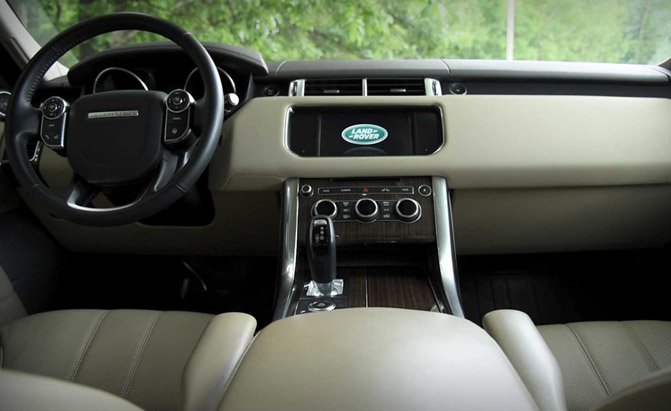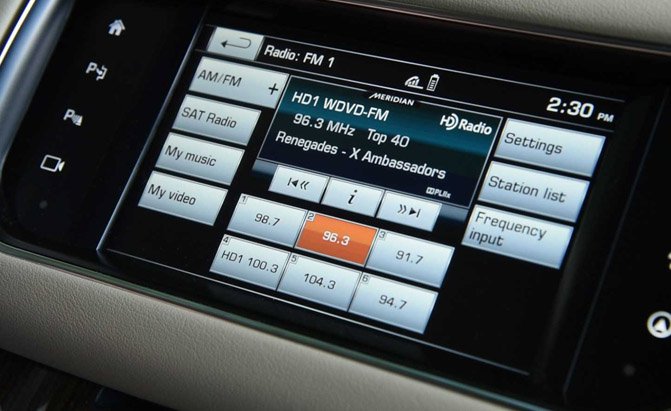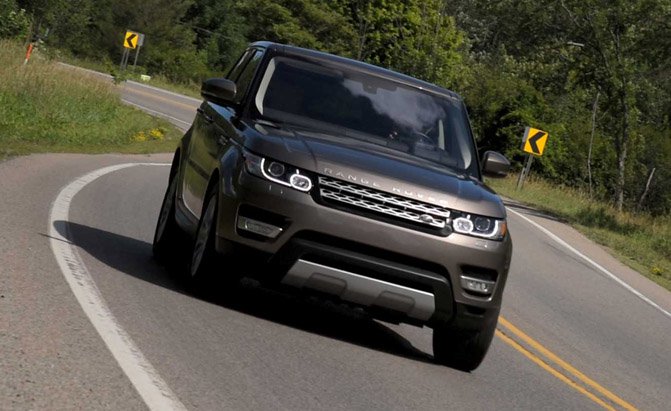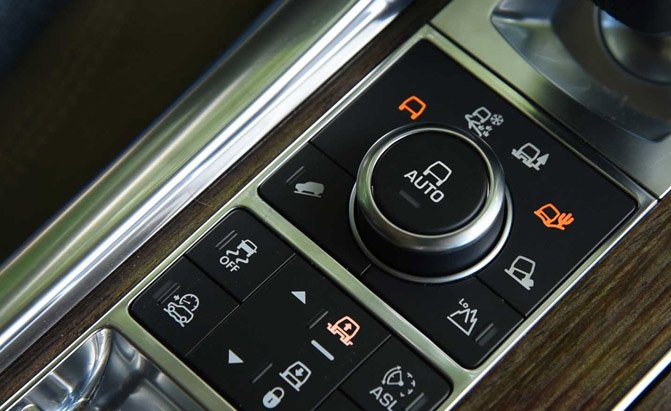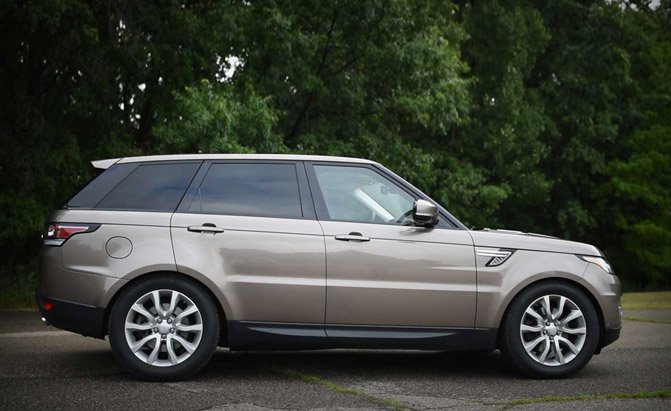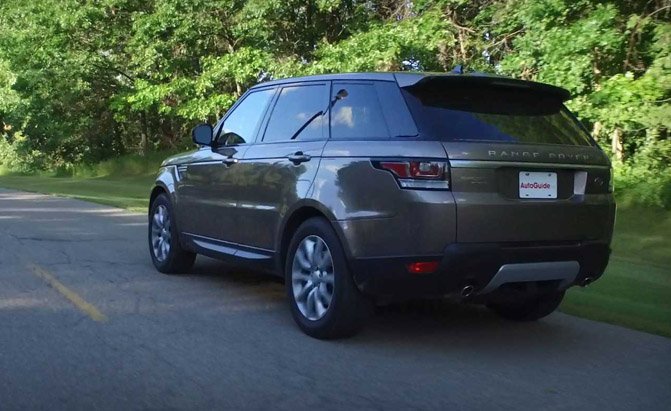The Range Rover Sport HSE Td6 is an SUV that supposedly lets you have your cake and eat it too.
This top-shelf rig promises a blend of luxury and capability that other utility vehicles can’t match, all with unparalleled efficiency. Wait, what?
How’s that possible? Well, the secret sauce in this seemingly improbable recipe is diesel fuel. Yes, the Td6 features a compression-ignition engine that makes it upwards of 30 percent more economical than gasoline-burning versions of the Range Rover Sport.
Look Ma, No Spark Plugs!
The heart of this vehicle is a 3.0-liter turbocharged V6. It’s rated at a rather middling 254 horsepower, but in typical diesel fashion, torque output is much more prodigious, measuring 443 lb-ft. An eight-speed automatic transmission routes that twisty goodness to the pavement through an advanced full-time four-wheel-drive system.
Get the Flash Player to see this player.
Thanks to its oil-burning drivetrain, this tall-riding yet ritzy-looking rig is almost unbelievably economical. According to the window sticker, it should return 22 miles per gallon in city driving and 29 on the highway; its combined figure is wow-worthy as well at 25 MPG. Not bad for a vehicle that weighs nearly two-and-a-half tons.
Welcome Aboard!
Climbing aboard the HMS Range Rover Sport takes a bit of work, but once you’re seated, it’s worth the effort. Beautiful, soft leather is used throughout the cabin. The dashboard is cleanly styled and timelessly elegant. Zebrano-wood trim adds a touch of warmth to a cabin that’s almost too cool for its own good.
Front or rear, the seat comfort is high. In particular, the anterior buckets are supremely restful, providing good support with just enough plushness to keep fatigue at bay on long hauls.
There’s plenty to like about the Sport’s cabin, but there are a few things you need to be aware of, because looks can sometimes be deceiving.
For starters, there are far too many arthritic trim pieces. Poke at some of the commonly used touch points and you’ll be treated to a chorus of plastic-on-plastic noise; its interior is creakier than a Royal Navy man-o’-war caught in a squall, and that’s no exaggeration.
Also, I dislike the finicky electronic shifter — it won’t change gears unless you do it just right. And then there’s the infotainment system, which looks – and responds – like it’s about 10 years out of date, replete with confusing menus and lots of delays. Where’s the company’s InControl Touch Pro system? Get it in here NOW! It’s beautiful, responsive and easy to use, everything the Sport’s technology is not.
The Drive
Putting this British battlecruiser into action quickly reveals that its diesel propulsion unit is a remarkable piece of work, one that pulls like a freight train. The torque it provides is just incredible, coming on strongest in the midrange where you need it every day.
From a standstill, mat the accelerator and there’s about a two-second pause as the engine inhales deeply, but then by 2,000 rpm, it’s shoving you back into the seat, and hard. The Td6’s 7.1-second zero-to-60 time is not far off the 380-horsepower gasoline-powered model’s time of 6.8.
This diesel is also unexpectedly refined, quiet and largely vibration free. Even the fuel-saving stop-start system is mostly smooth, though sometimes the vehicle w
ill shake a bit more than others, which is odd.
Icing on this powertrain pastry is the ZF eight-speed automatic transmission’s shift performance, which is just about perfect.
ALSO SEE: Range Rover Sport Coupe Spotted in Spy Shots
As for steering feel, the Range Rover Sport’s is sharper than I expected and pleasantly weighty, but there’s no disguising its mass; this is a large vehicle that doesn’t like being rushed. It’s advisable to go easy while negotiating corners.
Despite this heft and its automatic load-leveling air suspension, the ride quality is unexpectedly harsh, with plenty of body movement, even over minor road blemishes. In all likelihood this is because of the hardcore four-wheel-drive system.
Without going into too much detail, it can take you nearly anywhere on earth. Its signature Terrain Response System allows you to tailor the vehicle’s off-road behavior to specific conditions, so whether you’re traversing mud and ruts, slogging through sand or even scrambling over rocks, you can count on making it to your destination and home once again.
Beyond all of this, the Extra Duty Package adds a two-speed transfer case, All Terrain Progress Control (think of it as off-road cruise control that automatically maintains a set speed) and more for a reasonable $1,750.
Princely Pricing
The Range Rover Sport offers a lot of capability and prestige, but unfortunately, it’s priced accordingly. The example we evaluated drove off the lot graced with a sticker of $84,260, including about 12 grand in options.
Some of those extras included $2,620 climate and comfort package, which added 16-way adjustable front buckets, heated rear seats and adaptive xenon headlamps, among other items. The $2,900 driver assistance package brought lane-departure warning, traffic-sign recognition and a 360-degree camera array to the table. Also, an up-level 825-Watt Meridian sound system inflated the price tag by $1,850.
Go easy on the extras and you can get a Range Rover Sport for around 65 large, which is a much more reasonable figure.
The Verdict: 2016 Range Rover Sport HSE Td6
This ready-for-anything luxury SUV is designed to tackle the toughest of terrain yet still look good valeted in front of the opera house or cruising down Rodeo Drive. With ample comfort and luxury, room and style, the Range Rover Sport makes a strong case for itself.
But rich pricing and a somewhat chintzy cabin detract from the overall experience, as does its outdated infotainment tech. However, this rig’s powerful and economical diesel engine makes up for a considerable amount of this lost ground; it’s one of the best parts of this vehicle. So, take it from me, if you’re going to have a slice of cake, make sure to eat it with a fork or you’ll get frosting all over your face.
Discuss this review on our Range Rover Forum







